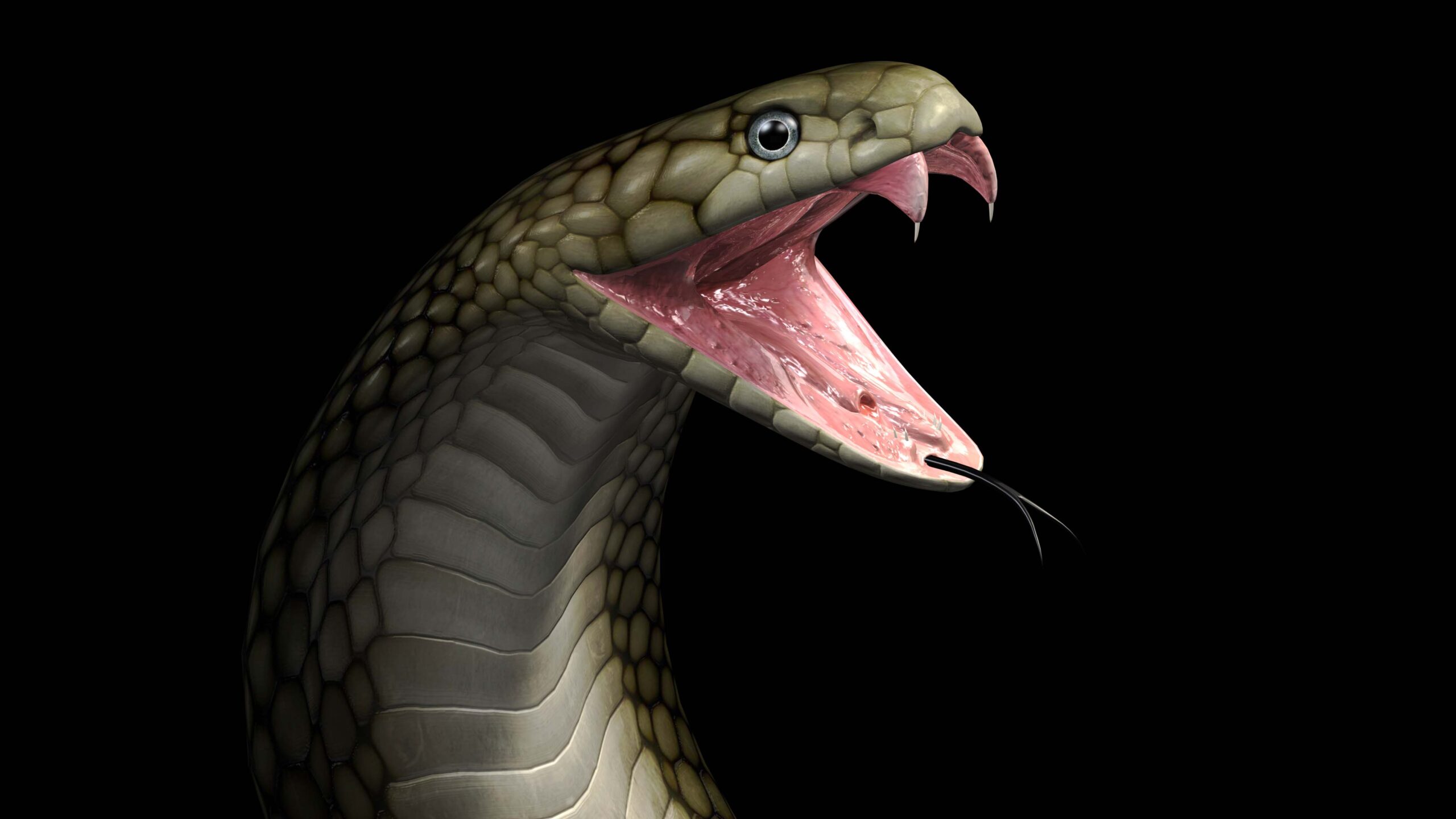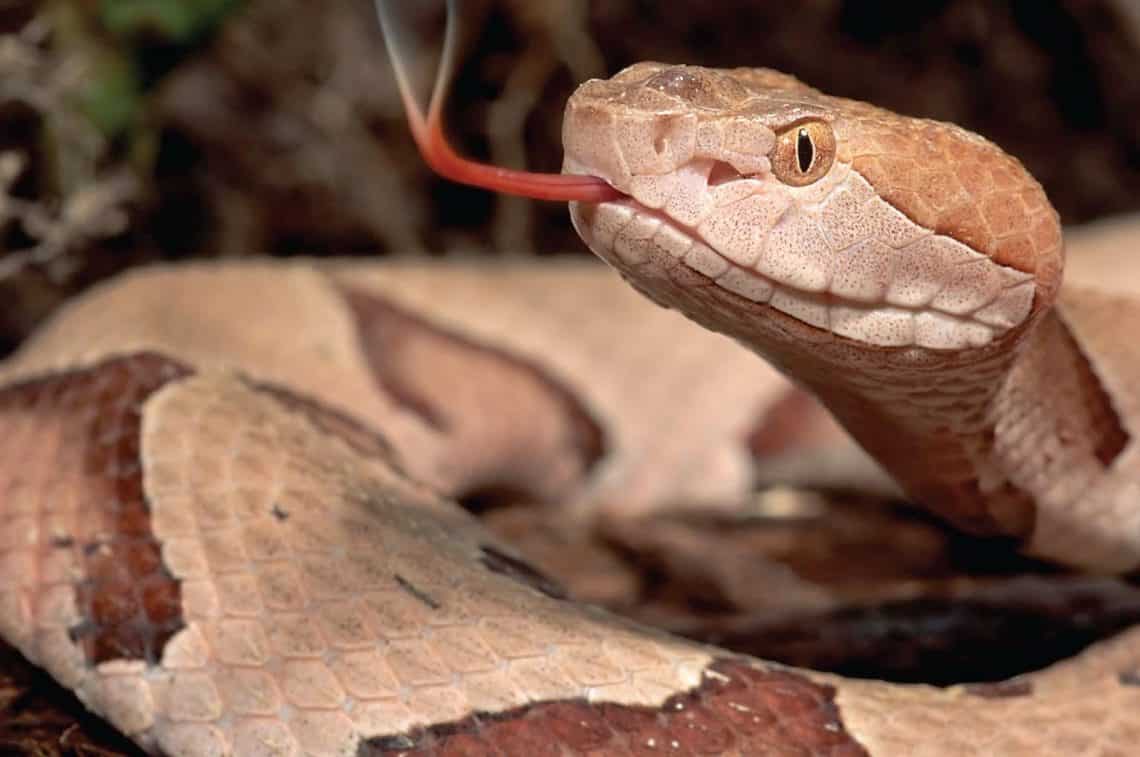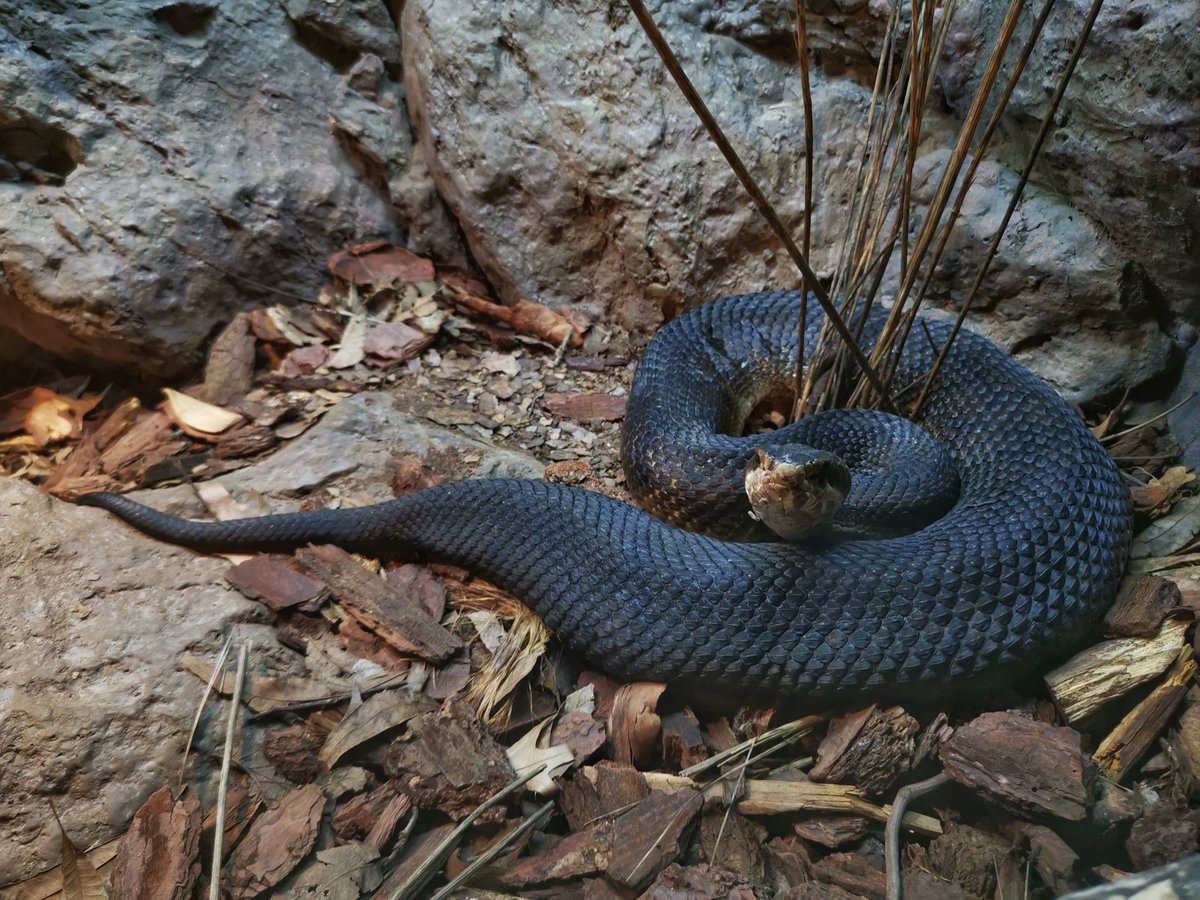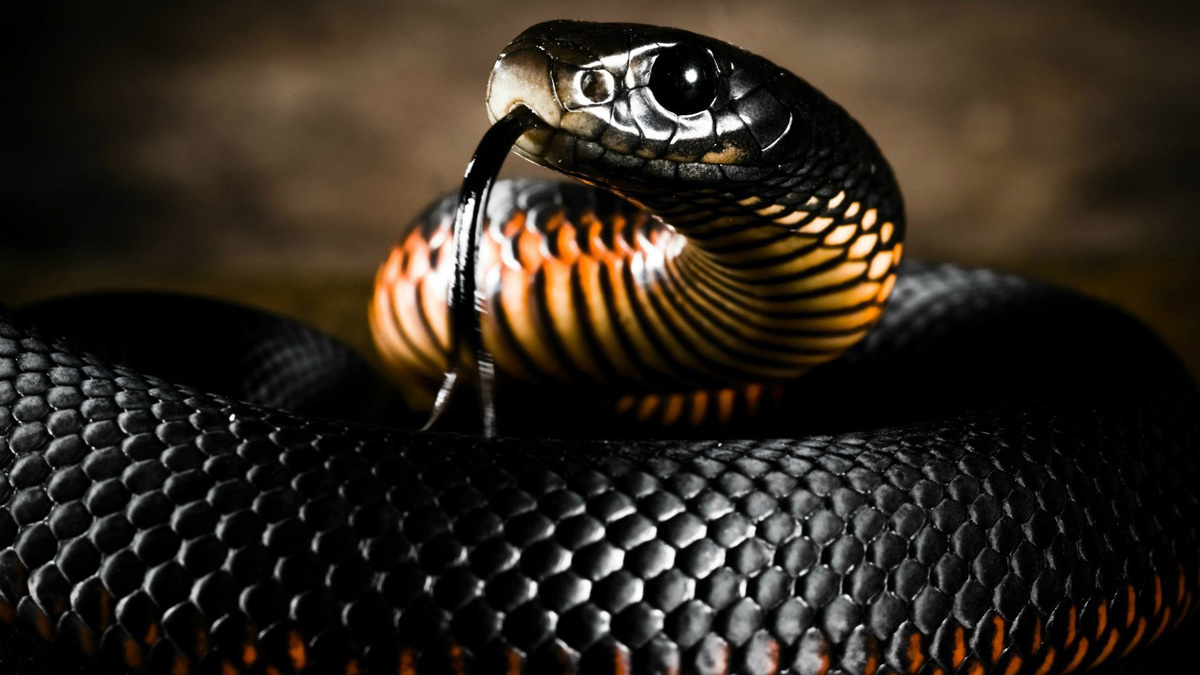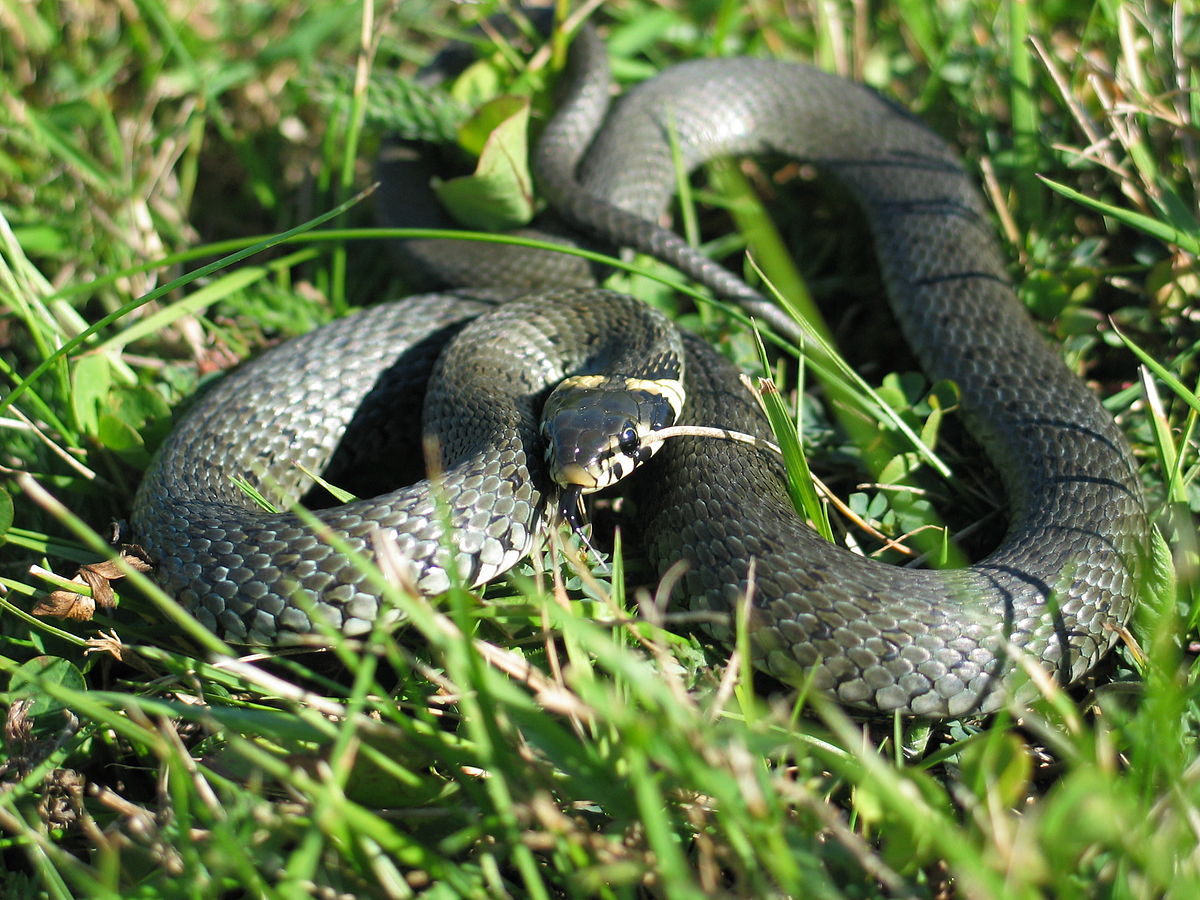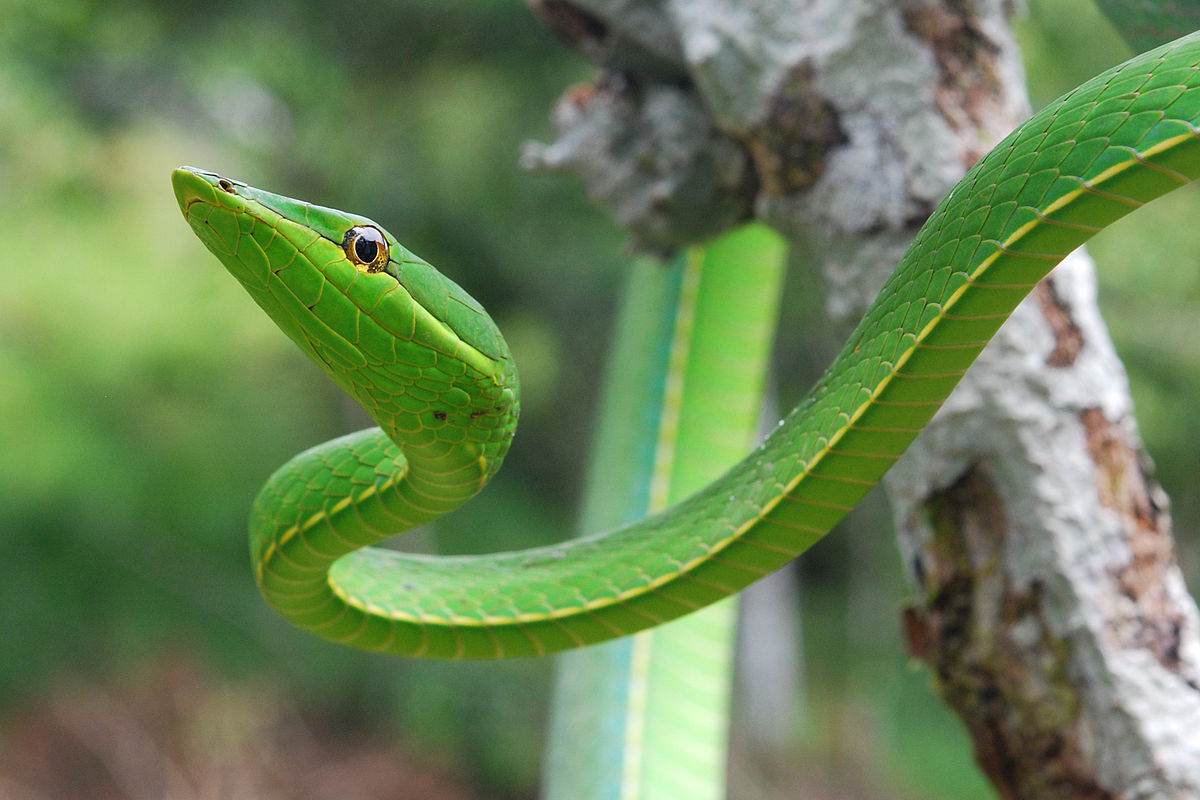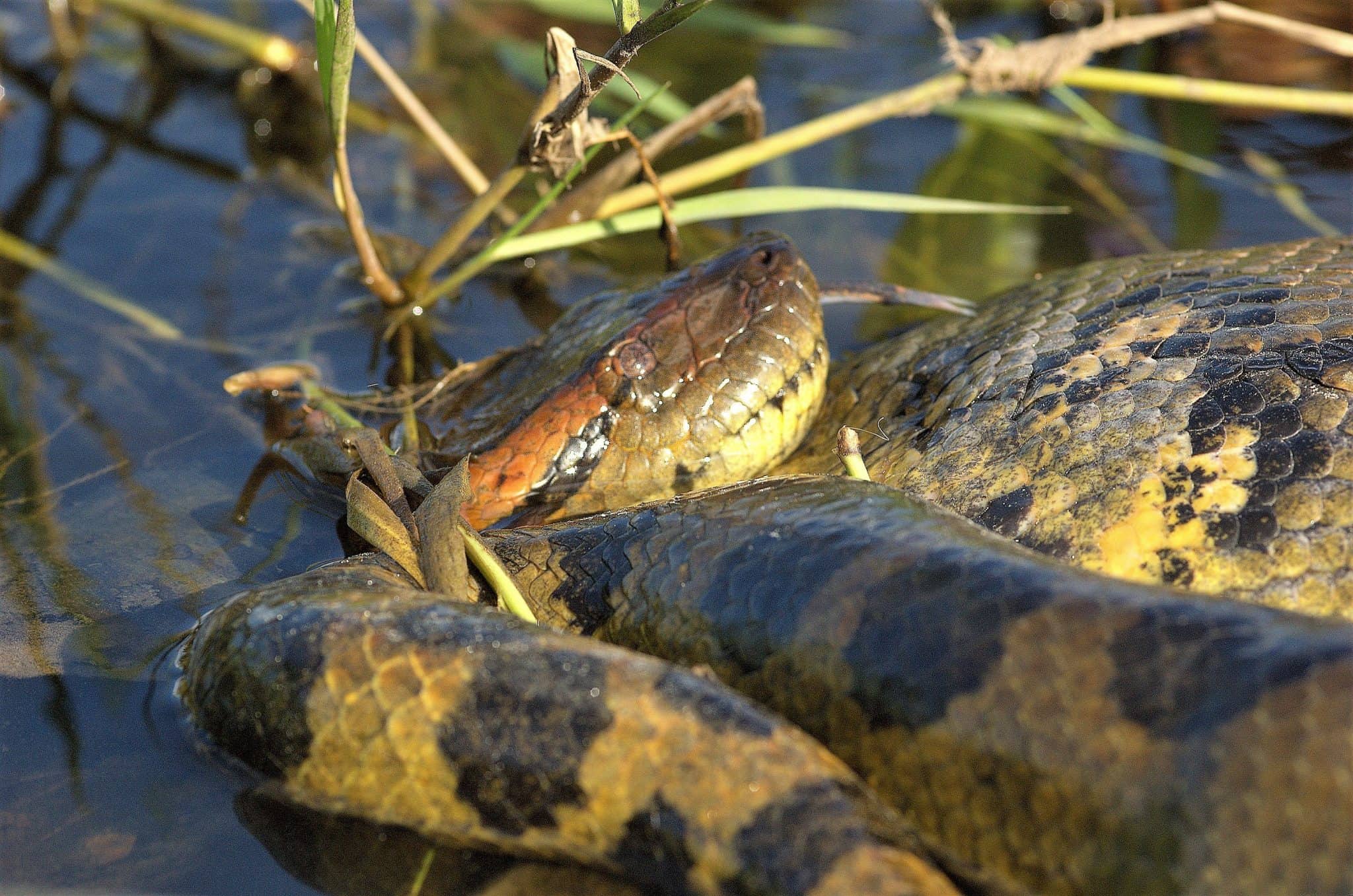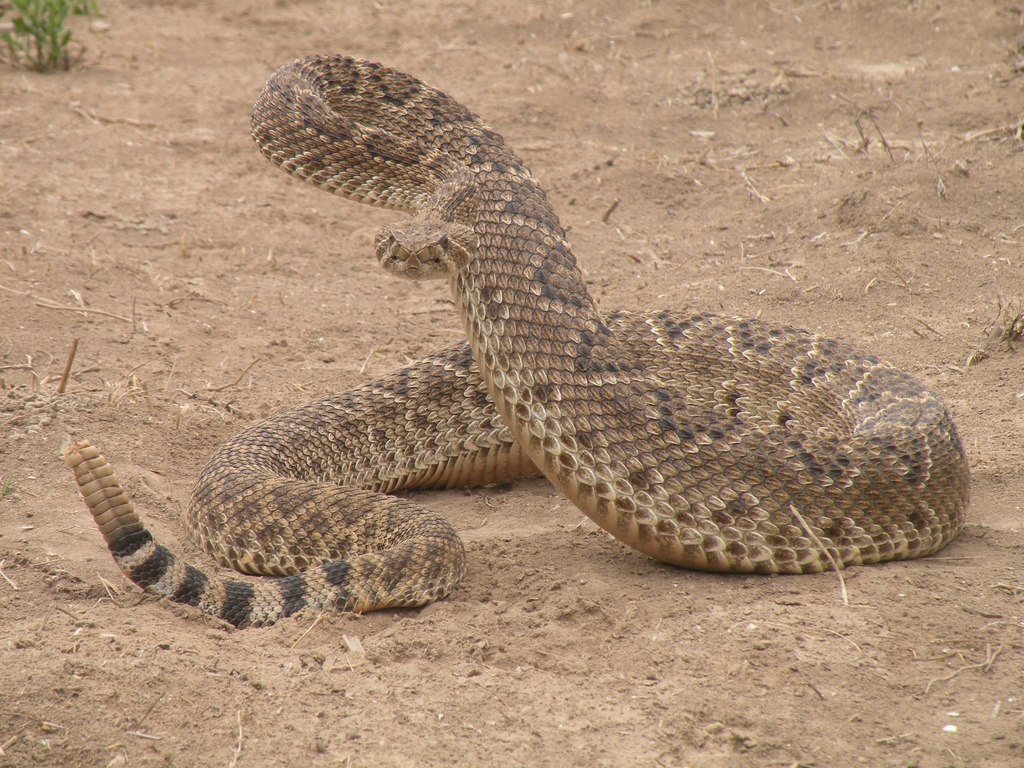Snakes are reptiles with a history full of changes and enormous evolutionary processes, each and every one of these are part of what these species are today. They can be located in all the ecosystems of the world, that is why with so much diversity of species and habitats, today we tell you everything about the types of snakes.

What are Snakes?
they are told Snakes or ophidians to reptiles that are known for not having upper or lower limbs, which is why their body is able to move by dragging, which is also called winding. Their structure is elongated and thin, however, this is not an impediment when it comes to getting food, since they are even able to consume animals that are larger in size.
This species has its origin in the Cretaceous period, even some types of snakes have small traces of what were legs at some point in their evolution, and although many experts believe that these differ from the lizard, so far there is not enough evidence that they can corroborate this or any hypothesis about its ascending origin.
Characteristics of Snakes
Snakes have a skin that is completely made up of scales, this aspect greatly favors them when it comes to moving around the earth, since they are propelled by the different deformations found on earth, and the scales only allow them to run into it without skidding on it.
These species can shed their skin from time to time, all with the intention of improving their physical structure, ability to move and get rid of any external organism that is threatening the health of reptiles. They are Vertebrate animals They can have between 200 and 400 vertebrae in their entire body.
The size of these species can vary a lot, everything will depend on the types of snakes and its characteristics, but it is important to know that the difference can be very noticeable, since the smallest of the snakes can only reach 10 centimeters in length, while the largest can reach up to 10 meters in length.
When moving, the jaw hits the ground, which allows them to receive the vibrations emitted by any external agent and in this way they are guided to flee, attack or hunt. There is also the fact that this part of their body is not completely attached to the skull, making it easier for them to open their mouths wide enough to swallow their prey.
Their senses of vision and hearing are very ineffective, so they complement their other senses to interact with the environment, including other organisms, while the jaw receives vibrations, the tongue serves as their sense of smell and they can easily recognize their environment thanks to this, for that reason it is very common for snakes to stick their tongues out of their mouths so much, since they are evaluating the environment.
Snake Feeding
all the different types of snakes they consume meat and depending on the species and the habitat in which they are found, their diet will be based, but it should be noted that this includes a wide variety of mammals, birds, fish, amphibians, insects and can even eat other reptiles.
Snakes do not crush their prey with their teeth, since they are not trained for this type of work, but they can swallow their prey whole and digest it with the help of the gastric juices found in the walls of the organism.
As we mentioned, the diet depends on the species of snake and the environment, but these animals can swallow many large animals, although this does not include humans, so you should not worry too much about that.
Thanks to the large amount of food that they can store in their body, snakes can spend long periods without eating, during all this time they must remain at rest and avoid doing any activity that requires a great use of physical effort, since in all that time is that the digestion process takes place.
Snake Fame
Snakes have a very bad reputation on the part of human beings thanks to the myths that are badly unfounded, this is because in the different religions and cultures from different parts of the world, they despise snakes for having the belief that they are actually They personify evil.
On the other hand, in many different regions, the snake represents many entities of good, such as gods of medicine or life, although it also symbolizes values, such as wisdom, life, knowledge, protection and security. However, despite all this, negative myths have more power over human consciousness, for that reason bad opinions towards this species predominate.
Species Diversity
The different types of snakes have a very similar appearance that usually varies slightly in the appearance of the size and color of the scales, without having many differences in their structure, however, they all have different ways of obtaining their food.
Some snake species they weaken or kill their prey through a bite in which they inject a strong poison, which, depending on its power, is capable of killing large animals and even human beings. On the other hand, there are some that immobilize the prey in a kind of squeeze, which is called constriction.
Types of Snakes
So far, more than 3.400 species of snakes are known around the world, which can be differentiated by variations in their structure, eating habits, habitat or region in which they reside and reproduction.
Diversity of Types of Snakes
The evolutionary processes of the different types of snakes have given the opportunity to have a certain type of mutation that allows them to adapt to the environment that surrounds them, from this the different species that we know today have emerged. Over time, the great diversity of species has been duly classified among the groups that you can see below.
Vipers
Vipers have a highly developed structure, especially when it comes to fangs, since they have long, hollow teeth that can be hidden inside the palate and come out when the animal goes into defense or attack mode, they are where the poison flows towards the prey, in addition to having a toxic one that can be very lethal for both animals and humans.
Their skull has a triangular shape, they have heat sensors on each side of their heads and they are very precise and agile when hunting, especially at night, they are ovoviviparous and can be found in many regions of the world. Some viper species They may be:
copper head
cottonmouth
Mambas, Cobras and Corals
These belong to the Elapidae family, although sea snakes are also included here, we must bear in mind that all species of this family are extremely dangerous, not only for animals, but for humans as well, since a large part of These have a powerful poison that is capable of ending the life of any man if the bite is not treated in time.
They are long and narrow, the scales get larger the closer they are to the head, they are oviparous and tend to move a lot around their environment, unlike others that only remain still and immovable, waiting to hunt.
The three different species have many differences in their physical structure and behavior, for one thing, cobras are of the types of snakes more threatening and with a worse reputation among human beings, they have a very precise and lethal attack, as well as having a very distinctive hood on their heads, which is removable and they usually take off when they feel threatened, with the intention of giving more volume to its structure.
On the other hand, mambas usually live in trees and move with great speed through the branches, being able to quickly reach their prey without giving them a chance to be alarmed. Coral snakes have a small frame, and they have a slight bite, so they are not considered threatening, they have very striking and bright colors. In this family of snakes we have:
Black mamba
King Cobra
snakes
These are also called true snakes, they cover most of the snake families covering almost a total of 1.800 species throughout the planet. The human being has nicknamed them snakes, a term that is derived from their real name "Colubridae".
There is a great variety of species in this family, these snakes are not classified as dangerous, since they do not usually attack very often, unless they need to feed and this will depend on the environment in which they live, the diversity of species that beech and the specific characteristics of the reptile.
Snakes occur more than anything in European regions, but luckily most are not poisonous and if they are, it is very possible that it is not fatal to humans, although this may vary depending on the snake that be and caution is advised when dealing with any reptile of this type. Some names of snakes are:
Collared Snake
corn snake
Python and Boa
These snakes do not have any type of toxin, but they are specialists in constriction, so they are big enough and strong enough to wrap themselves around their prey and squeeze them until the blood stops flowing and the organs begin to fail abruptly. .
Their teeth, since they do not have holes through which the poison runs, then they have teeth that act as claws, capturing the animal so as not to let it escape. This family of snakes can be classified as the oldest, since even in their bodies traces of what were once their legs remain.
In this group are the largest known snakes, reaching up to 10 meters long, possessing a very voluminous thickness that helps them when hunting for food. Here are snakes like:
Boa constrictor
Royal Python
Classification of Snakes by Habitat
This is a species that has been able to spread throughout the length and breadth of planet earth, except for regions that are very cold, and despite that, we can find this species of animal in almost any type of habitat you can imagine, from forests and jungles, to deserts and savannahs, they can even be found inhabiting seas and rivers.
Types of Land Snakes
Terrestrial snakes can live in different areas of the planet and depending on the type of environment in which they are found, they can live in tunnels under the ground, between rocks, in agricultural areas and also in trees.
They can survive among their predators thanks to the colors that their scales have, since being neutral, brown or greenish, they can camouflage very well with the environment. In the opposite case, these species have very strong and striking colors that warn other species about their poison or toxin that they may possess as a method of defense.
Tree Snakes
When we talk about the snakes that live in the leafy jungles or humid forests, we must note that these mostly live and move through the trees, this helps them escape from their predators because they keep a very prudent distance from the ground.
Their scales usually have shades such as brown or bright green, which helps them blend in with the trunks, branches and leaves of the trees. This aspect also favors them when searching for food, hunting animals that move through the trees, such as small rodents or birds. Some examples of these can be:
Green Bejuquilla
sand snakes
These are the ones that live in deserts and savannahs, where temperatures are high and water is very scarce, usually they must adapt to this type of environment to be able to move through the soil and sand without being detrimentally affected by the powerful rays of the sun. , just as they must adapt their behavior so that when hunting, it is not necessary to exhaust all the energies they possess.
They usually live in tunnels made by themselves or by other animals, and they move by digging a shallow hole in the sand and moving under it, then appearing on the surface for a few seconds, to sink back into the sand. the sand. Some types of sand snakes can be:
Red Diamond Rattlesnake
Types of Water Snakes
Some types of snakes They have moved to aquatic habitats and have adapted to live in them permanently, not only in rivers and lagoons, but also in the vast seas. These animals can be considered semi-aquatic, because although they spend most of their lives underwater, they still need to breathe air.
Freshwater Snakes
These snakes live on the banks of rivers and lakes, they usually spend much of the day on the surface of the water and dive mainly to find food. Some also tend to move on the land surface and only go to the water with the intention of hunting fish or amphibians.
Most of these species are Snakes of Spain, which are distributed throughout the European regions, although they can be found in other parts of the world. Some of these snakes can be:
Anaconda
sea serpents
These types of snakes They are completely adapted to marine life, even their structure has evolved so that their tail allows them to move faster and their mostly flat body allows them to zigzag freely through the water. They usually live in corals, rocks or in sandy depths, where they can easily camouflage themselves in the dark, with the help of seaweed.
These species are so adapted to marine life that even if they could come to the surface of the earth, they could not move on the ground. On the other hand, these species still need to breathe air, so they must come to the surface from time to time, but they could hold their breath underwater for up to 5 hours.
A very interesting fact is that among these sea snakes are the species with the most powerful and powerful venom, being able to kill their prey in a few minutes with just one bite. Some of these species are:
Jerdon's Sea Serpent
Classification of Snakes by Venom
In this section we will be able to clarify very important information about what are poisonous and non-poisonous snakes, in addition to remembering the fact that poisonous species feed and defend themselves through this toxin, but those that do not have poison use other defense methods. and hunting, such as constriction.
Types of Venomous Snakes
This is a particular one that draws a lot of attention from human beings and that classifies snakes as very dangerous animals, although many do not know that most are not poisonous and even if they are, they do not present a real threat to humans, since they do not attack them, only in the remote case that they feel attacked.
It is necessary to limit that only 10% of the snake species Throughout the world they are poisonous, these species have special teeth that make it easier for them to bite and inject the toxin into their prey. Not all of them have a venom of equal potency, so its lethality will influence their diet and the size of their prey.
The types of poisonous snakes, can be classified into different groups:
- Solenoglyphs: They have long, hollow fangs that easily pierce the skin of their prey and the poison that is injected flows through these same holes until it reaches the body of the other animal to take effect in seconds. Many of these species have a poison that can affect humans.
- Proteroglyphs: They have fangs with a small slit through which the poison runs and reaches the prey, this slit is sufficiently closed and allows the toxin to reach the animal faster, although the process is longer than in others. types of snakesDespite this, its poison is very powerful.
- Opisthoglyphs: They have a toxin that is very mild and does not affect humans, so it is not considered a threat. Like the previous one, they have fangs that connect with a slit through which the poison flows, but this one is more open and makes the process difficult.
- Aglyphs: Its teeth are not formed for the injection of the toxin, it is considered poisonous because the fluids in its oral cavity are toxic.
We must remember that the human being is not part of the diet of snakes, but there are poisonous snakes that can be lethal or present complications in the human body. Some of the poisonous snakes are:
Diamond Rattlesnake
Types of Non-Venomous Snakes
Bearing in mind what was previously said about the types of poisonous snakes, We must know that 90% of the remaining species do not have any type of poison or toxin, but that does not mean that they are dangerous, since thanks to the great extension they have, they can suffocate their prey until they cut off the circulatory system. and cause death in minutes.
Despite this, many people believe that these species of snakes can act as pets, since as they are usually calm and do not have toxins, many adopt them as pets, although this is possible, it is not recommended, since they are species wild animals that have not gone through an adequate process of adaptation to life in the home. Some examples of this type of snakes can be:
false coral
